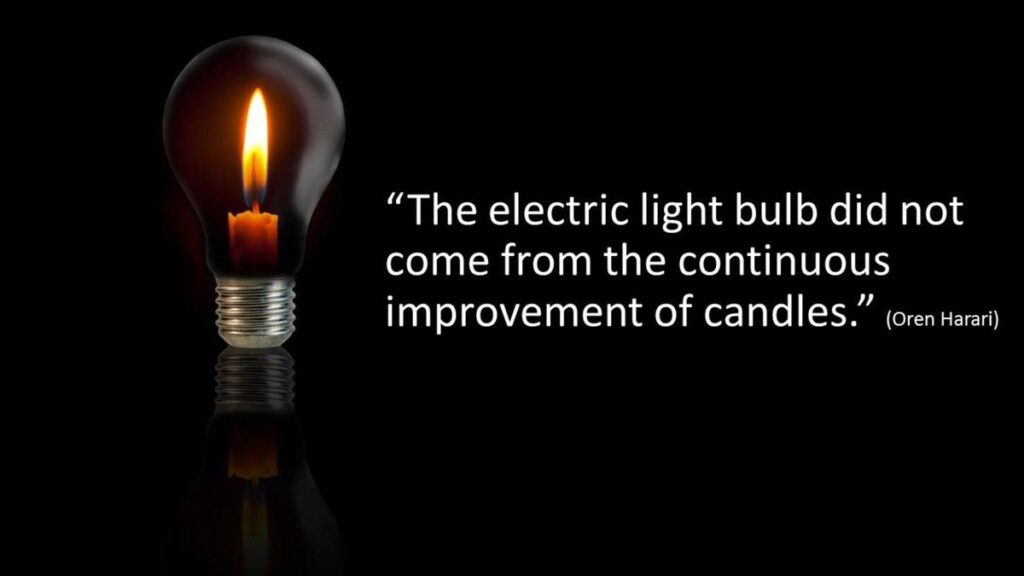I need to clear the air. My goal is to engage the supply chain community in a no smoke and mirrors discussion. Here I am attempting to write a no holds barred post: one absent of hype with a focus on authenticity.

My observation is that the supply chain community perpetuates a number of myths about planning. As discussions full of oxymorons, acronyms, and juxtapositions fill the air, I think that it is time to step back, and rethink planning based on the opportunities that new forms of analytics and data give us. This post is a reflection from twenty years as an analyst in supply chain planning.
Definitions:
Oxymoron: The combination of contradictory or incongruous words (such as cruel kindness)
Juxtaposition: The act of placing words or concepts close together or side by side, for comparison or contrast.
The difference between an oxymoron and a juxtaposition lies in usage. While the oxymoron contrasts two contradictory words side by side, a juxtaposition is a dialogue with greater distance between the concepts. For example, real-time planning, end-to-end planning, control tower, integrated business planning (IBP), and digital brain are oxymorons while discussions on innovation bounded by a required ROI is a juxtaposition. (True innovation is never defined initially by a mandatory Return on Investment (ROI).) Both oxymorons and juxtapositions add to the confusion in the successful deployment of planning.
My goal is to drive change. Just as the electric light bulb did not come from the continuous improvement of candles, I believe that supply chain planning improvements will not come from doing more of the same. Cleaning up our language needs to be a first step.
Reflection
Last week, I had a discussion with a Supply Chains to Admire Award Winner. The client sought to implement best practices. I asked, “Why would a supply chain leader be satisfied with historical practices? What makes the company believe that they are best practices? Why would they not want to innovate and, drive first-mover advantage?”
Today only 7% of manufacturers are innovators. Most planning leaders accept that traditional planning deployments add value. My advice? Buyer beware. In my work with companies, I see many planning deployments destroying value. The reason? Lack of clarity.
To get started, ask tough questions:
- What makes a good plan?
- How can I use market insights to make good decisions at the speed of business?
- What is supply chain excellence? How can I align the organization to a balanced scorecard through the visibility of options?
- What is the role of inventory? The goal of a forecast?
Today’s definition of supply chain planning is my starting point. Here I share a point of view. In the process, if I offend anyone, I apologize in advance. I hope to stimulate thinking.
Unraveling Oxymorons and Juxtapositions.
Let’s examine the conflict in the terms. My goal is to stimulate thinking, illuminate the disconnect, and kill confusion. It is my hope that it can help.
- End-to-End Planning: For many organizations, the goal of a supply chain planning implementation is grounded in delivering end-to-end planning, but they have not defined the term “end.” And most are linear progressions devoid of sensing. Should planning be linear from a customer to a supplier? I don’t think so. Current planning taxonomies do not plan across make, source, and deliver answers bi-directionally. For example, there is no commonality between Distribution Requirements Planning (DRP) and Transportation Planning (TMS)
- Real-time Planning: Planning by definition will not and should not be real-time. The frequency of planning should match the business process. Continual reaction to real-time data streams introduces nervousness into the system. If real-time planning is your goal, invest in a Dalmatian and a fire truck because you will always be fighting fires.
- Intelligent Planning: Planning intelligence should come from business leaders interpreting the options of design and simulation. Accepting plan output without review and acceptance of the options is not intelligent.
- Integrated Business Planning (IBP): How can you succeed at Integrated Business Planning (IBP) if the organization is not aligned? Or unclear on the definition of supply chain excellence? Integrating data does not align an organization motivated by functional metrics. Organizational alignment gaps grew three-fold over the past decade and most implementations of IBP increase process latency degrading value.
- Digital Brain. Our brains are not digital. The brain is an analog system (a continuous system that operates with the world in real time), and the computation is digital (occurs through a series of discrete steps that are insensitive to time). The brain uses the nervous system to sense and respond with continuous feedback and sensory perception. The optimization of digital signals by technologists is a sharp contrast to the concept of thinking.
- Control Towers: How can you control what you cannot manage? While many organizations are enamored with the concept of a control tower attempting to improve visibility, most implementations generate alerts without intelligence. The reason? Most implementations are unsure of what they want to control and the principles of control theory. The multiplicity of alerts without intelligence adds noise to the system and destroys usability.
Summary
Now let’s get down to business. Start by clearly defining the goals and objectives and align the organization. Then, and only then, begin the discussion on technology selection.







